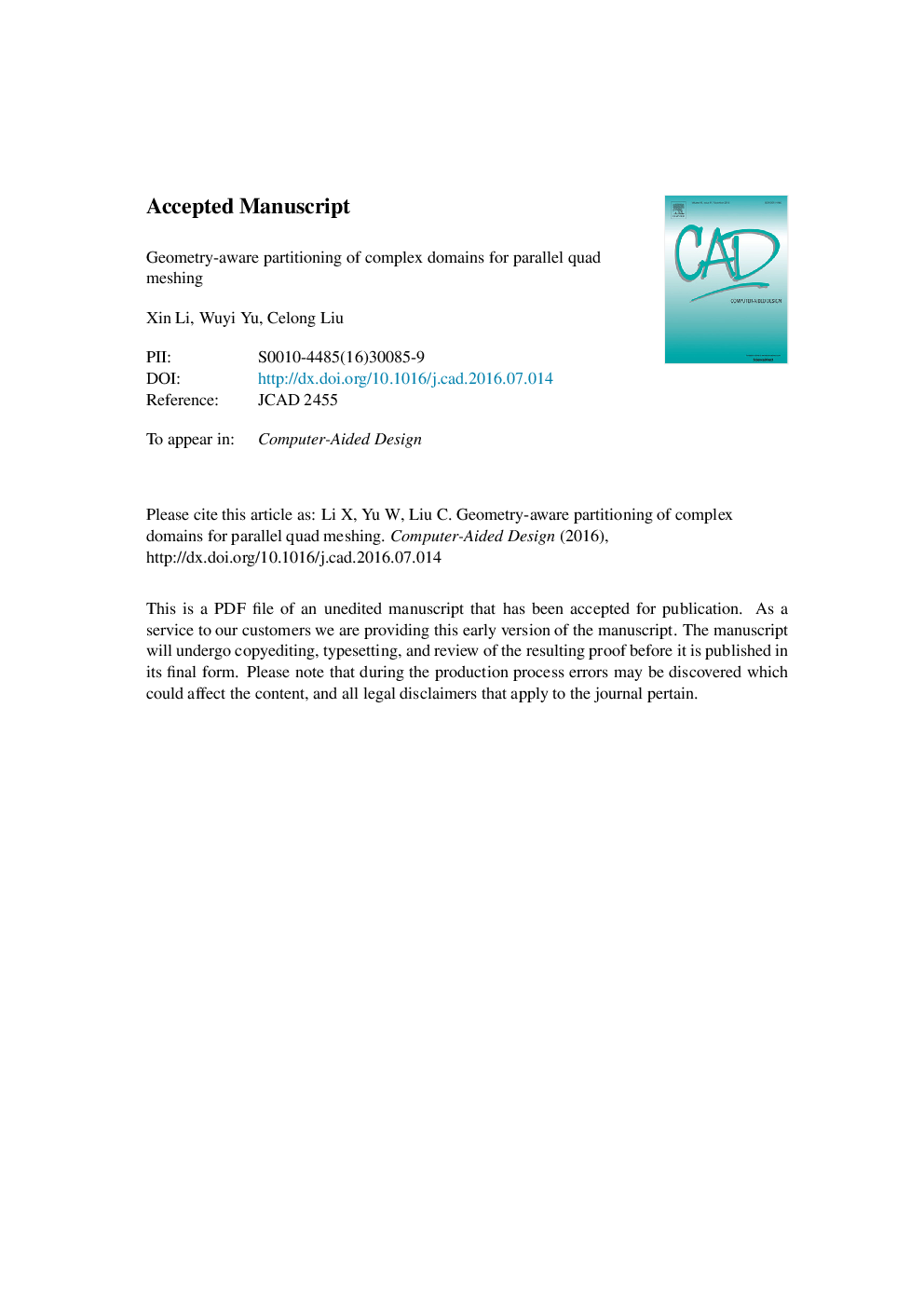| Article ID | Journal | Published Year | Pages | File Type |
|---|---|---|---|---|
| 4952619 | Computer-Aided Design | 2017 | 38 Pages |
Abstract
We develop a partitioning algorithm to decompose complex 2D data into small and simple subregions suitable for effective distributed and parallel quadrilateral mesh generation. To support high-quality quad mesh generation, the partitioning reduces to solving an integer quadratic optimization problem with linear constraints. Directly solving this problem is expensive for large-scale data. Hence, we also suggest a more efficient two-step algorithm to obtain an approximate solution. First, we partition the region into a set of cells using Lâ Centroidal Voronoi Tessellation (CVT), then we solve a graph partitioning on the dual graph of this CVT to minimize the total partitioning boundary length, while enforcing the load balancing and each subregion's connectivity. With this decomposition, subregions are distributed to multiple processors for parallel mesh generation. Through comparisons on the quality of the final meshes and the performance of simulations run on these meshes, we show that our decomposition algorithm outperforms existing partitioning approaches by offering more simulation-friendly regular meshes.
Keywords
Related Topics
Physical Sciences and Engineering
Computer Science
Computer Graphics and Computer-Aided Design
Authors
Xin Li, Wuyi Yu, Celong Liu,
